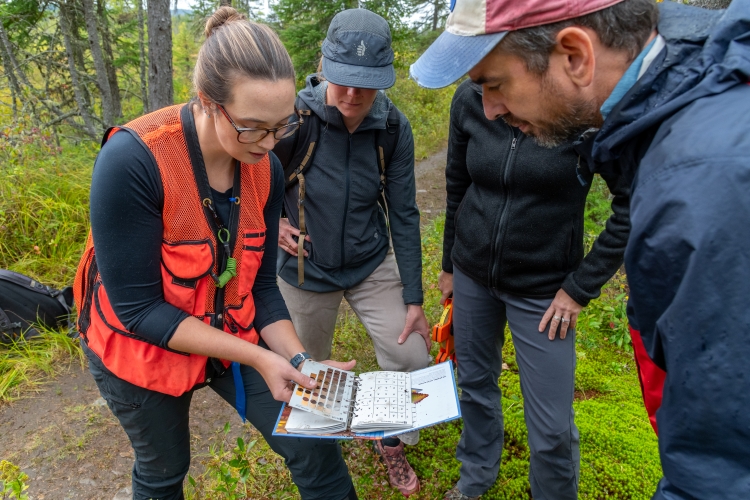Science and Research
At the Adirondack Park Agency, science and research is conducted by the Resource Analysis and Scientific Services (RASS) division, which plays a pivotal role in understanding and conserving the unique ecosystems of the Adirondack Park. This division is dedicated to conducting comprehensive research, data analysis, and scientific assessments related to environmental conservation, land use planning, and natural resource management within the Park.
 Our work involves delineating wetlands, studying biodiversity, assessing ecosystem function, and evaluating the effectiveness of conservation strategies. Through collaboration with stakeholders, government agencies, and research institutions, we contribute valuable insights and evidence-based recommendations to support informed decision-making and sustainable development practices in the Adirondacks.
Our work involves delineating wetlands, studying biodiversity, assessing ecosystem function, and evaluating the effectiveness of conservation strategies. Through collaboration with stakeholders, government agencies, and research institutions, we contribute valuable insights and evidence-based recommendations to support informed decision-making and sustainable development practices in the Adirondacks.
Wetlands
The New York State Freshwater Wetlands Act and the APA Act have stringent requirements for regulated activities involving wetlands. RASS staff lead the Agency's wetlands protection program, which includes mapping, delineation, evaluation, mitigation, and impact analysis.
Engineering
We routinely conduct site visits, evaluate plans and designs, and provide technical comments and design recommendations. Our analyses are based upon science and engineering judgment in accordance with applicable laws, regulations, and guidance documents.
Engineering evaluations include, but are not limited to:
- On-site wastewater treatment systems
- Design of dams, bridges and roads, stormwater management
- Erosion and sediment control
- Mineral extraction
- Traffic and noise studies
- Adequacy of municipal infrastructure services
Assessing Conservation Strategies
Our staff work with regional partners to support ongoing efforts to conserve the Adirondack Park's environmental resources. In the case of the Park's lakes and ponds, this often involves working with lake and watershed organizations that are coordinating to prevent and address the spread of aquatic invasive species (AIS).
As a part of this, our staff conduct lake site visits to review proposals associated with non-native and invasive species management activities. This includes review of proposed hand harvesting methodologies, stocking of sterile triploid grass carp, and the use of aquatic herbicides.
For the Park's forests, staff work with private land owners who manage their lands for timber. Ongoing human disturbance, including invasive pests and pathogens, climate disruption, acidic deposition, and poor forest management, pose a threat to these forests, which could in turn impact those found on publicly owned lands.
To manage this, our staff review proposals for jurisdictional timber harvesting projects on private lands. In reviewing such projects, staff seek to minimize and mitigate environmental impacts associated with the removal of vegetation.